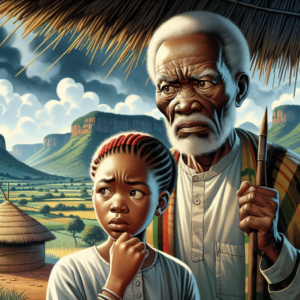#ChildMarriage #EndChildMarriage
Breaking Free: A Closer Look at Child Marriage in Iran
Child marriage remains a critical issue impacting millions of young girls globally. In Iran, this practice is deeply embedded in cultural, social, and economic contexts. Grasping the nuances of child marriage in Iran is vital for fostering awareness and pushing for reform. This article seeks to illuminate this pressing matter, examining its underlying causes, repercussions, and potential solutions.
The Landscape of Child Marriage in Iran
Child marriage is defined as the formal or informal union of a girl before she reaches 18 years of age. In Iran, this practice is alarmingly common, with some girls marrying as young as 9. A UNICEF report indicates that around 17% of girls in Iran are wed before their 18th birthday. This figure underscores the urgent need to combat child marriage as a breach of human rights.
Factors Contributing to Child Marriage
To understand the roots of child marriage in Iran, one must consider several contributing factors:
- Cultural Traditions: In numerous communities, early marriage is regarded as a customary practice. Families may believe that marrying off their daughters early provides protection and secures their future.
- Economic Hardship: Families struggling financially may choose to marry off their daughters to alleviate economic pressures or to gain financial assistance from the groom’s family.
- Limited Access to Education: Many young girls who marry early have restricted educational opportunities, perpetuating cycles of poverty and dependence.
- Legal Acceptance: Iranian law permits girls to marry at 13 with parental consent, and even younger with judicial approval, further normalizing the practice.
Impact of Child Marriage
The consequences of child marriage on young girls are severe and multifaceted:
- Health Complications: Early pregnancies carry significant health risks, including complications during childbirth and elevated maternal mortality rates.
- Interrupted Education: Marriage frequently leads to the cessation of a girl’s education, restricting her future prospects and independence.
- Emotional Distress: Many girls endure psychological challenges such as depression and anxiety due to being thrust into adult responsibilities prematurely.
- Increased Vulnerability to Abuse: Child brides face a heightened risk of domestic violence and abuse, often lacking the power to advocate for themselves within their marriages.
As the esteemed writer and activist Malala Yousafzai once stated, “I raise up my voice—not so that I can shout, but so that those without a voice can be heard.” This sentiment resonates profoundly with the struggles of child brides in Iran, who frequently endure their hardships in silence.
Initiatives to Address Child Marriage in Iran
Despite the obstacles, various initiatives are underway to combat child marriage in Iran:
- Awareness Initiatives: Organizations are actively working to educate communities about the harmful effects of child marriage through outreach and educational programs.
- Legal Advocacy: Activists are pushing for reforms in the legal system to raise the minimum marriage age and safeguard girls’ rights.
- Educational Access: Ensuring that girls have access to education is vital for empowering them to make informed decisions about their futures.
- Support Networks: Creating support systems for at-risk girls can help them evade early marriage and explore alternative paths.
Personal Narratives: Stories of Change
The narratives of those impacted by child marriage are compelling and can drive change. One such story is that of a young girl named Fatemeh, who was married at the age of 12. She recounted her experience:
“I felt like my childhood was taken away from me. I wanted to go to school, but instead, I was forced to take care of a household. I wish more girls knew they have the right to choose their own path.”
Fatemeh’s experience serves as a poignant reminder that behind the statistics lie real lives affected by this issue. As the renowned human rights advocate Eleanor Roosevelt once said, “Where, after all, do universal human rights begin? In small places, close to home—so close and so small that they cannot be seen on any maps of the world.”
The Collective Responsibility to End Child Marriage
Eliminating child marriage demands a united effort from society. Here are ways individuals and communities can make a difference:
- Spread Awareness: Share insights about the ramifications of child marriage and advocate for girls’ rights within your community.
- Support Local Initiatives: Contribute to or volunteer with organizations dedicated to ending child marriage and promoting girls’ education.
- Engage Policymakers: Advocate for legal changes that protect girls from early marriage and foster gender equality.
- Empower Young Girls: Encourage girls to pursue their education and aspirations, providing them with the necessary resources for success.
Conclusion: A Call to Action
Child marriage constitutes a violation of human rights that affects millions of girls in Iran and across the globe. It is imperative that we raise awareness, advocate for reform, and support initiatives aimed at eradicating this harmful practice. As human rights activist Nada Al-Ahdal remarked, “Protecting human rights is not an option, but a responsibility of us all” @nadalahdal. Together, we can dismantle the chains of child marriage and empower girls to shape their own destinies.
#NadaFoundation
#ChildMarriage
#Nada_Foundation
#NadaAlahdal
#Breaking #Chains #Understanding #Child #Marriage #Iran
breaking-the-chains-understanding-child-marriage-in-iran





















